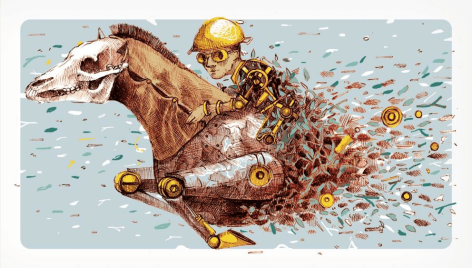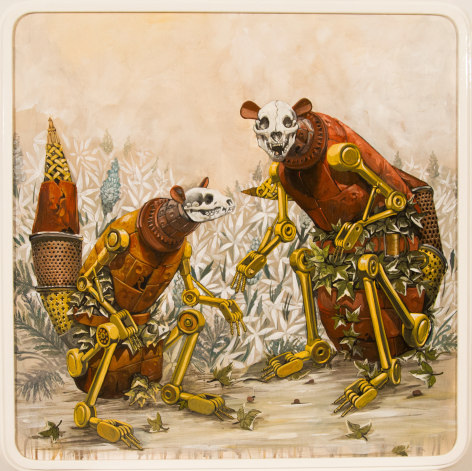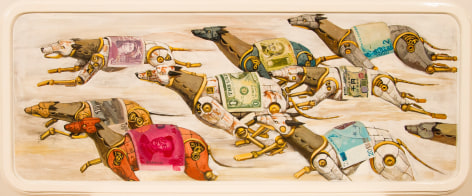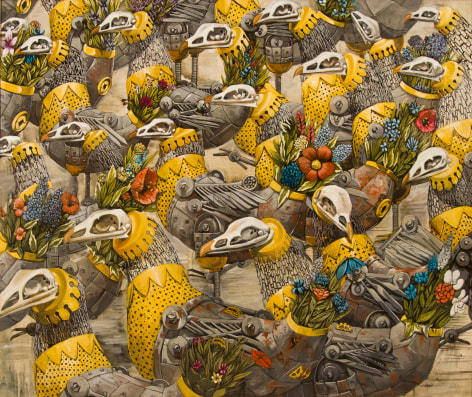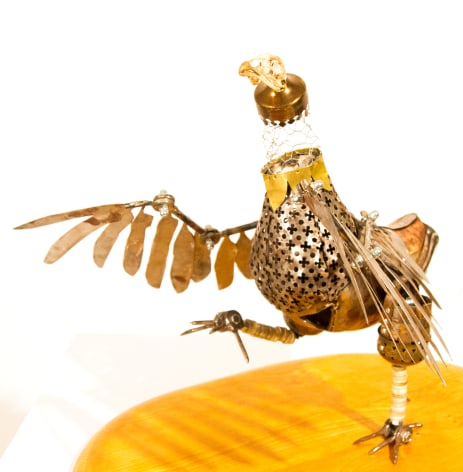Pixelpancho, born in Turin in 1984, was introduced to color and form by his grandfather who painted occasionally. With time, his passion for art and design led him to the Albertina Academy of Fine Arts and then to the Academy of Fine Arts in Valencia, Spain where he obtained his degree. During this time he became familiar with the graffiti and street art scenes. Influenced by this world, he began to use spray paint cans and markers on outdoor surfaces. This stood out from the classic paper and canvas formula of many other students. Traveling between his hometown of Turin and Valencia, Pixelpancho took every opportunity to be noticed on the streets. Using different mediums such as tile, wall painting and sticker/poster art, his work soon adorned the walls of many European cities.
Pixelpancho’s work draws from several diverse influences including Joaquin Sorolla, Salvador Dali, the political painter group “El Equipo Cronica,” Ron English, and Takashi Murakami. Traveling to Paris, Amsterdam, Warsaw, Vienna and other cities for graffiti jams and gallery exhibitions allowed his style to evolve from simple robot characters to the more complex compositions that exist in his work today.
The narrative in Pixelpancho’s work is driven by a forgotten world that sits under a blanket of dust. In this world broken and dented robots are found decaying into the ground, their iron and rusted copper bodies falling and laying as if discarded into oblivion. Although the scale of his work varies, the surreal realm is a constant thread piercing through contemporary and historical references. The strength of the physical and gestural references that humanize these robots results in the artist's unmistakable mark. Pixelpancho’s work, which can be found on the walls of abandoned buildings in cities throughout Europe, the U.S. and Mexico, is an interconnected structure of stories. The murals, paintings, and sculptures are only a small part of a greater story within the ever-growing realm.


